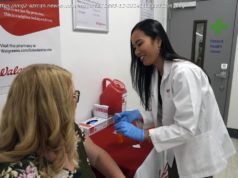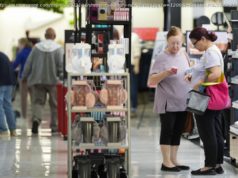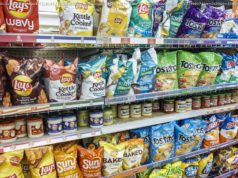Third-quarter growth set a record, fueled by federal assistance. But recent signs point to a loss of momentum in job gains and production.
U.S. economic output increased at the fastest pace on record last quarter as businesses began to reopen and customers returned to stores. But the economy has climbed only partway out of its pandemic-induced hole, and progress is slowing. Gross domestic product grew 7.4 percent in the third quarter, the Commerce Department said Thursday. The gain, the equivalent of 33.1 percent on an annualized basis, was by far the biggest since reliable statistics began after World War II; the previous record was a 3.9 percent quarterly increase in 1950. The rebound was fueled in part by trillions of dollars in federal assistance to households and businesses. That aid has since dried up, even as the recovery remains far from complete: The economy in the third quarter was 3.5 percent smaller than at the end of 2019, before the pandemic. By comparison, G.D.P. shrank 4 percent over the entire year and a half of the Great Recession a decade ago. The report was the last major piece of economic data before the presidential election on Tuesday. President Trump’s campaign hailed the big gain as “absolute validation” of the administration’s policies, while the campaign of former Vice President Joseph R. Biden Jr. dismissed it as a “partial return” that was already fading. Economists said the third-quarter figures revealed less about the strength of the recovery than about the severity of the collapse that preceded it. G.D.P. fell 1.3 percent in the first quarter and 9 percent in the second as the pandemic forced widespread business closures. A big rebound was inevitable once the economy began to reopen. The challenge is what comes next. “The reason we had such a big bounce is that the economy went from closed to partially open,” said Michelle Meyer, head of U.S. economics at Bank of America. “The easy growth was exhausted, and now the hard work has to be done in terms of fully healing.” There are signs that the recovery is losing steam. Industrial production fell in September, and job growth has cooled, even as a growing list of major corporations have announced new rounds of large-scale layoffs and furloughs. Most economists expect the slowdown to worsen in the final three months of the year as virus cases rise and federal assistance fades. Forecasts for the next G.D.P. report are highly uncertain this early in the quarter. But most forecasters expect growth to slow to about 1 to 1.5 percent, with some economists anticipating even weaker results. That would leave the economy about 2.5 percent smaller than before the pandemic. A 2.5 percent contraction would be the equivalent of a relatively typical recession — smaller than the Great Recession but substantially worse than the mild downturns of the early 1990s and 2000s. “We’re no longer in unprecedented territory, but this is still a deep gash in our economy,” said Tara Sinclair, a George Washington University economist who studies recessions.






